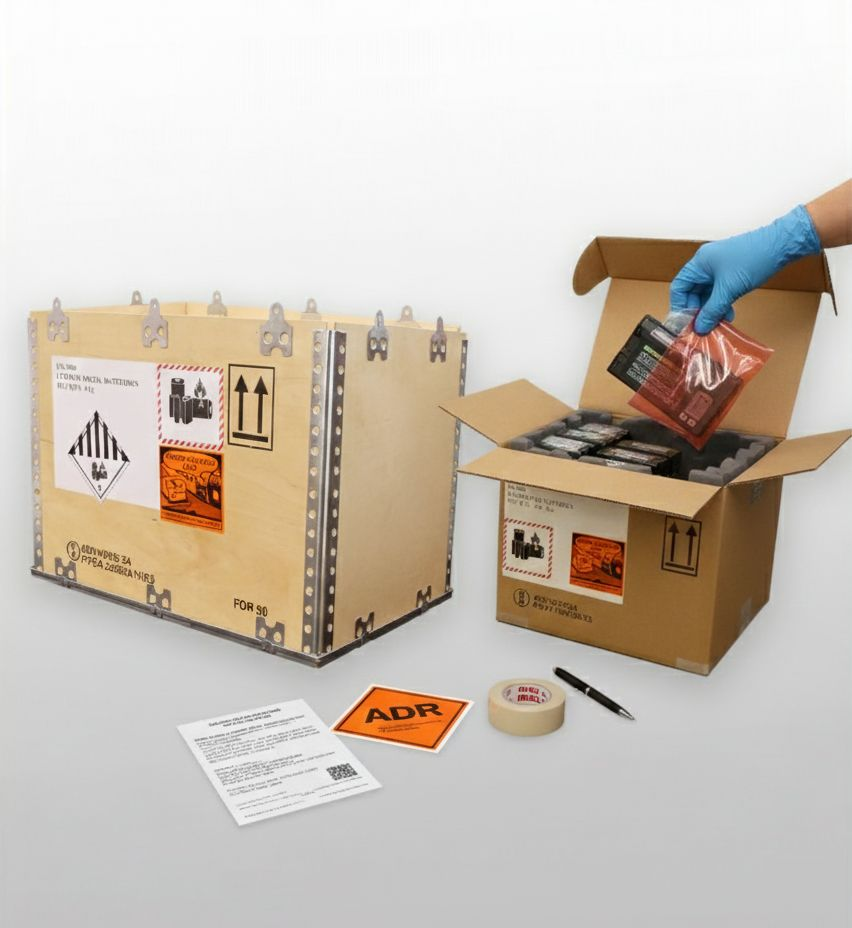
Lithium Battery Transport: Complete Guide
The lithium battery market is booming, powering everything from electric vehicles that are redefining our mobility to the most advanced medical devices that save lives. For logistics and supply chain professionals, this exponential growth represents a major strategic challenge: how to transport these powerful energy sources efficiently, economically, and above all, safely and in compliance?
The answer is not found in a single solution, but in a comprehensive approach that combines expert mastery of regulations with judicious choice of packaging solutions. This complete guide is designed to provide you with practical, detailed and actionable information to secure every shipment and transform regulatory constraints into a competitive advantage.
Why is lithium battery transport so critical?
The main concern, and the driver of all regulation, is the risk of thermal runaway. This is not just a buzzword; it's a real chemical phenomenon. If a battery is damaged by impact, perforation, or suffers an internal short circuit, a chain reaction can be triggered. The temperature of a cell increases uncontrollably, spreading heat to neighboring cells. The result can be violent fire, explosion, and emission of toxic and flammable gases.
⚠️ Shipper responsibility: In case of incident, international regulations are clear: it is the company that initiated the shipment that is held responsible. Non-compliant packaging can result in considerable fines, invalidation of insurance policies, and civil or even criminal prosecution.
Understanding the Regulatory Framework: IATA, ADR and IMDG
For a logistics professional, navigating dangerous goods transport means speaking the language of these three fundamental acronyms:
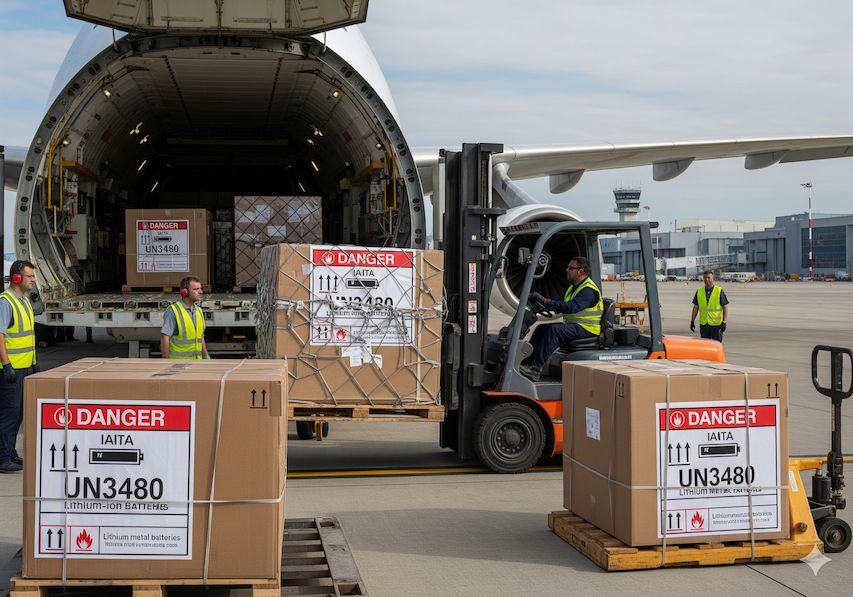
IATA
International Air Transport Association: Governs air transport. The strictest of regulations. "Dangerous Goods Regulations" (DGR) manual updated annually to define packing instructions, authorized quantities and mandatory documents such as the "Shipper's Declaration".

ADR
European Agreement concerning the International Carriage of Dangerous Goods by Road: Applies to road transport in more than 50 countries, mainly in Europe. It defines requirements for vehicles, driver training, truck placarding, and types of authorized approved packaging.
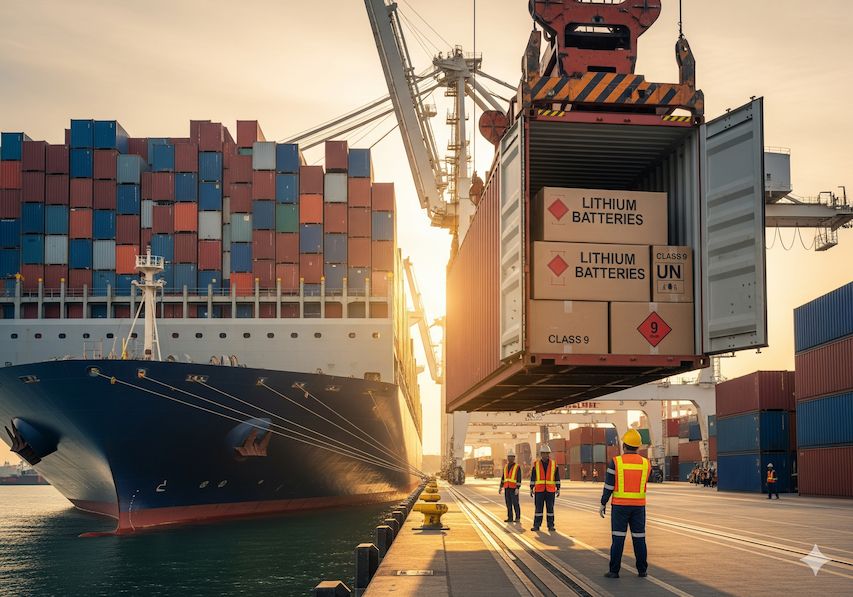
IMDG
International Maritime Dangerous Goods Code: Developed by the International Maritime Organization (IMO), this code applies to maritime transport. It takes into account the specific risks associated with long transit times and the marine environment.
Although the basic principles (classification, packaging, labeling) are harmonized, each regulation has its own subtleties. A shipment perfectly compliant with ADR may be refused for air transport if it does not meet a specific IATA requirement.
Deciphering UN Codes: The Key to Compliance
One of the first steps for any shipment is to identify the correct UN number. For lithium batteries, the four most common are:
UN 3480: Lithium-ion batteries alone
Spare batteries, batch to assembly plant. Most restrictive classification.
UN 3481: Lithium-ion batteries contained/packed with equipment
Laptop, industrial tool, medical device with its battery.
UN 3090: Lithium-metal batteries alone (Non-rechargeable)
Lithium-metal batteries, military or medical equipment long duration.
UN 3091: Lithium-metal batteries contained/packed with equipment
Devices using lithium-metal batteries.
This distinction determines the packing instruction (PI), quantity limits per package, and labeling requirements.
Packaging Solutions: The Key to Compliance and Safety
Faced with this complexity, the solution lies in choosing UN approved packaging. Approved packaging is not just a simple box; it's a protection system that has undergone rigorous testing (1.2 meter drop, stacking, pressure) to guarantee its ability to safely contain its dangerous contents.
As a specialist for more than 30 years in the design and manufacture of packaging, we know that the right solution must combine compliance and practicality. Here are perfect examples for battery transport:
4GV approved cartons: The flexible solution
Their main advantage is their flexibility. The "V" (Variation) certification allows you to ship different types and sizes of batteries in the same outer packaging, provided that the total weight and cushioning requirements are met. For a company managing varied flows of spare batteries, it's a versatile and economical solution.
Discover 4GV cartons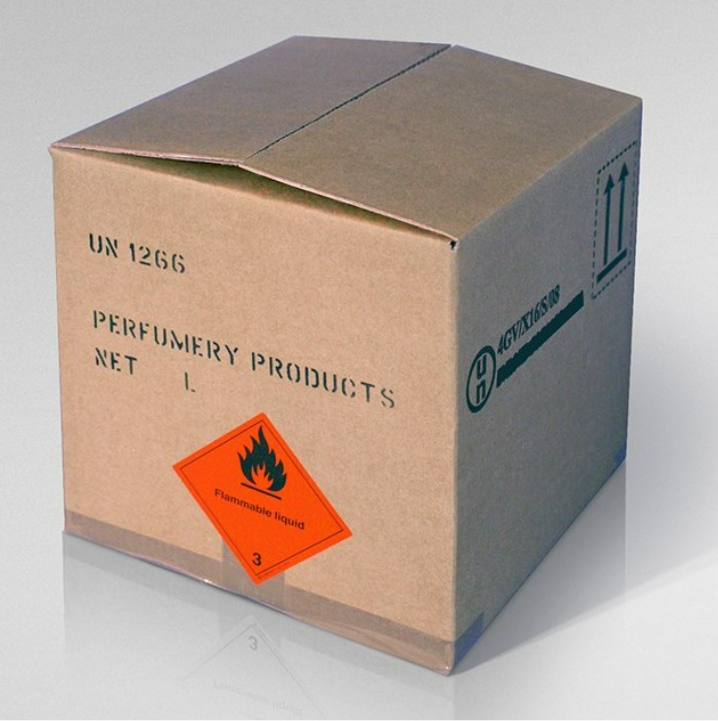
4DV folding crates: The robust solution
These plywood crates offer superior robustness for heavier, more expensive or more sensitive batteries. Plywood resists moisture and punctures better. They are also reusable, making them a sustainable and profitable solution for regular logistics loops, fitting perfectly into a circular economy strategy.
Discover 4DV crates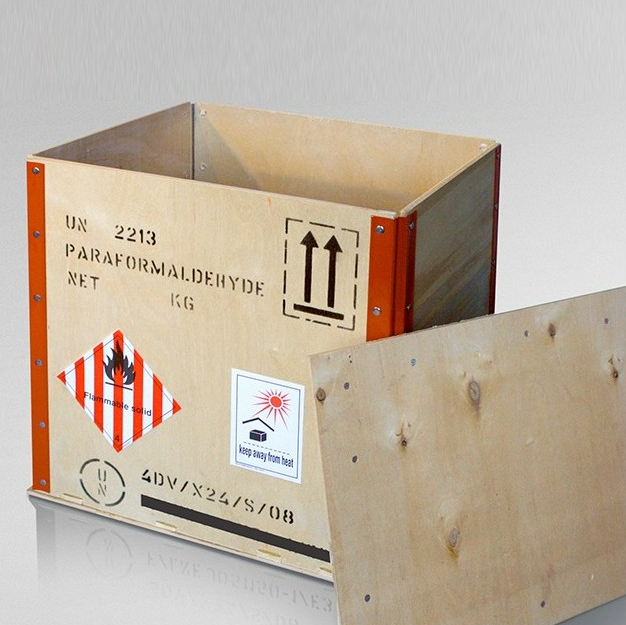
The Crucial Importance of Internal Cushioning
Outer packaging is not everything. Inside, each battery must be protected from shocks and electrically isolated. Internal cushioning (vermiculite, custom technical foams) is essential to prevent batteries from moving, coming into contact with each other or hitting the walls, thus preventing short circuits.
FAQ: Your Questions on Lithium Battery Transport
Make Compliance a Strategic Advantage
Mastering lithium battery transport may seem complex, but it's an essential and non-negotiable skill in today's world. By understanding the risks, scrupulously respecting regulations and choosing high-quality approved packaging solutions, you're not just complying with the law. You protect your products, your personnel, your reputation and the sustainability of your business.
In a competitive market, reliable and compliant logistics is no longer a cost center, but a true strategic advantage, a guarantee of seriousness and trust for your own customers.
Ready to secure your shipments?
Discover our approved packaging solutions for lithium batteries and ensure compliance of every shipment.